Advertisement
After postponement, Philip Guston's work finally arrives at the MFA
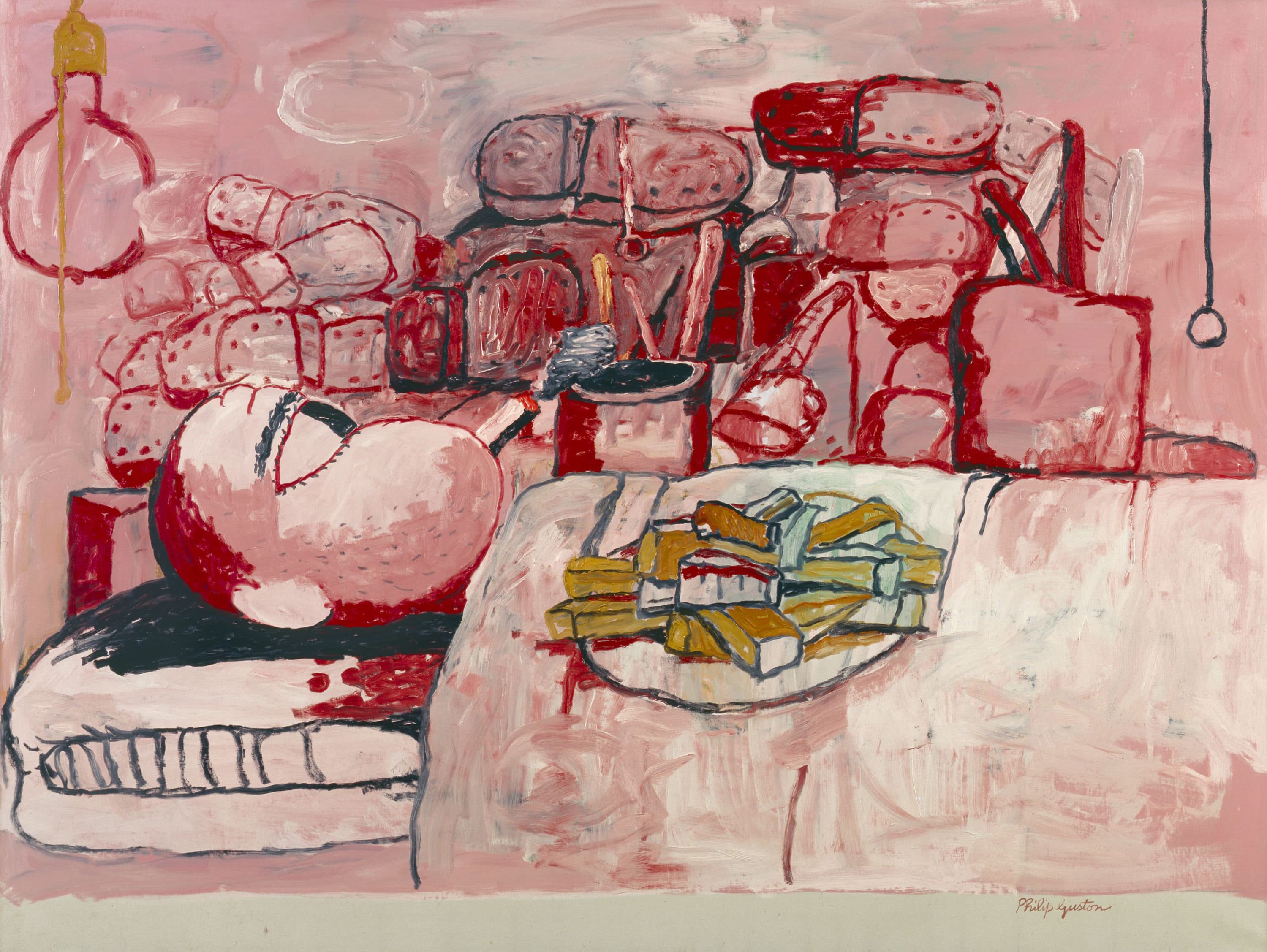
Is now the right time for “Philip Guston Now”?
Opening May 1 at the Museum of Fine Arts, Boston, the show is touted as the first major retrospective of the artist’s work in decades. It was originally scheduled to open July 2021, but in the wake of George Floyd’s murder in 2020, the protests that followed, a rise in white supremacist activity, the toppling of Confederate statues, and raucous debate over voting rights, “critical race theory,” and nearly everything else, the show was bumped to 2024.
“We are postponing the exhibition until a time at which we think that the powerful message of social and racial justice that is at the center of Philip Guston’s work can be more clearly interpreted,” wrote the organizers in a statement released in September 2020.
Since then, show organizers have reconsidered their reconsideration. The MFA, the National Gallery of Art in Washington, D.C., the Museum of Fine Arts, Houston, and the Tate Modern in London revised their stance after receiving a letter signed by thousands of artists and curators demanding that the show go on. Not to do so, wrote critics, would be an acknowledgment of a “longstanding failure to have educated, integrated, and prepared themselves to meet the challenge of the renewed pressure for racial justice that has developed over the past five years.”
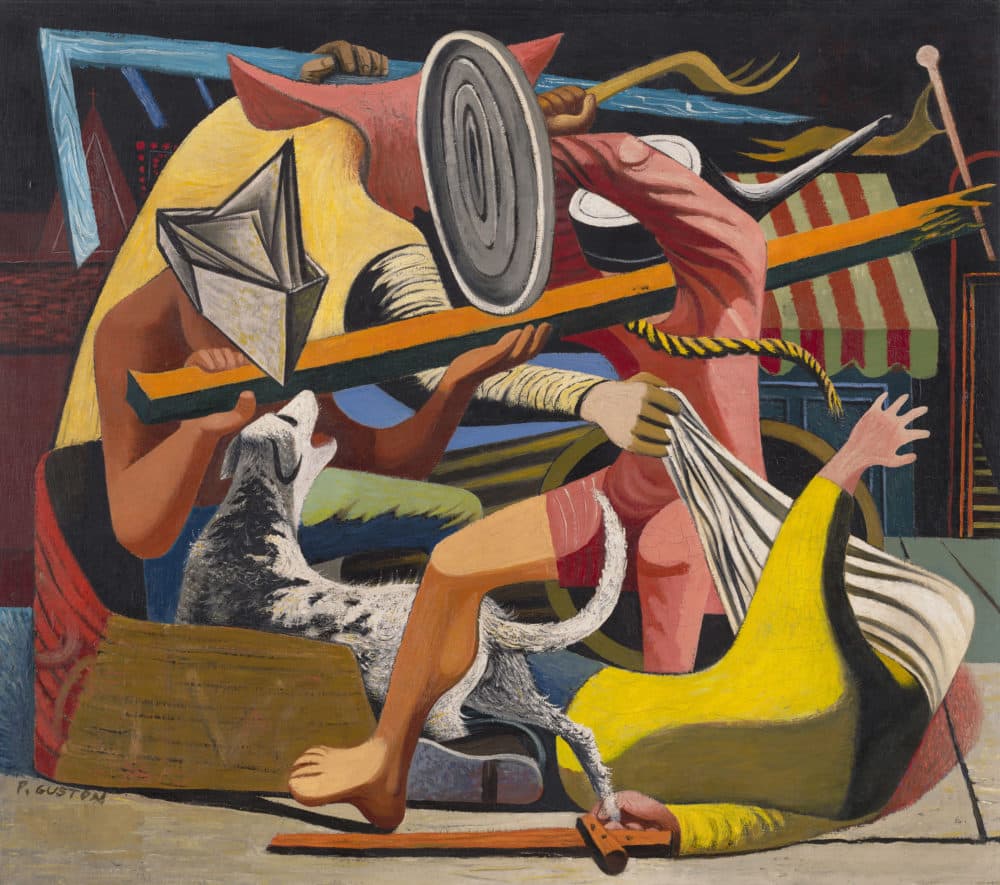
(Even one of the Tate co-organizers criticized the decision as “extremely patronizing” — before getting suspended for speaking out.)
After a pause in which the museum could, according to MFA membership director Megan Bernard, “think about this exhibition and so many angles, think about the staff, think about our visitors, think about who was going to be walking through that door, and the fact that we don't know exactly who's going to be walking in,” the show was recalibrated. Boston, which was originally slated to be the last stop on the tour, became the first and the show at the MFA is now slated to run from May through Sept. 11. The curatorial team was expanded in an attempt to better contextualize the artist’s work. The museum even went so far as to enlist a trauma specialist to offer written guidance to museum visitors triggered by Guston’s powerful images. Troubling news clippings and magazines that contextualize his work are presented in discreet black cases with sliding doors so that visitors can decide whether or not to “opt-in” to see them. If visitors find anything too traumatizing, there’s even an alternative “exit” to bypass parts of the exhibit.
Advertisement
“There's no good way to say we started the work, and it is ongoing work,” says Bernard. “I don't want to say that at some point we will have gotten it done. But I also think for those who say that we had this gap in our learnings and we hadn't moved forward, now we are moving forward.”
So, what was so troubling about a show devoted to one of the most intriguing American painters of the 20th century?
It comes down to the Ku Klux Klan.
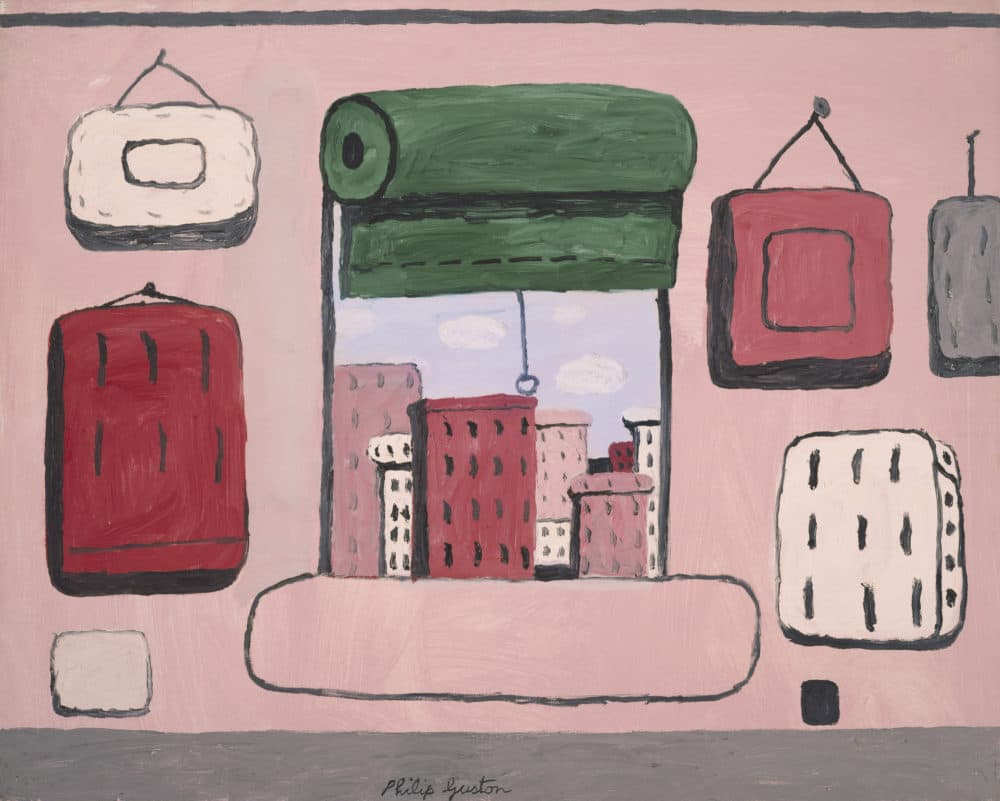
Guston, of Russian Jewish extraction, started off as a social realist muralist during the Great Depression, (heavily inspired by Mexican muralists), turned to figurative painting in the 1940s, and then to abstract expressionism in the 1950s. In the late 1960s, he transformed himself once more, trading in abstract clouds of layered brushwork for something very different. Guston took to making large cartoon-like paintings, using his favored pinks and reds, centered around identifiable forms and objects that could be as mundane as a shoe, a lightbulb, a cup, a book, or a brick. Although his unique style of painting sometimes looks like something out of a comic strip, his fleshy pinks and blood reds point at something much more sinister than the daily funnies. Satirical and ironic, his paintings often exude a sense of malignant foreboding. The darkness is most palpable in the pieces (about 11 in the show) in which Guston explicitly uses his infamous hood motif inspired by Ku Klux Klan robes. In his 1969 work “Untitled (Two Hoods),” Guston paints two hooded figures who confront each other before what appears to be a typical American cityscape. In “City Limits,” painted that same year, three hooded figures cruise about town in a car. In “The Studio,” also painted in 1969, Guston even goes so far as to paint himself at the easel, cloaked in a white hood.
With Ku Klux Klan hoods as repeated imagery in his work, it is likely show organizers were wary of igniting a controversy like that surrounding the artist Dana Schutz (herself influenced by Guston) following the 2017 exhibition of her “Open Casket” painting at the Whitney Biennial. In that painting, Schutz, who is white, painted an abstracted version of the face of Emmet Till, a 14-year-old Black boy brutally beaten and lynched in Mississippi in 1955 after being accused of offending a white woman in a grocery store. Schutz was accused of using Black pain and suffering for fun and profit. In addition, the MFA has grappled with its own image of late as an institution unwelcoming to people of color, especially since 2019 when a group of seventh-graders from the Helen Y. Davis Leadership Academy in Dorchester complained of racist treatment by museum staff.
But in this case, there can be no cries that Guston is appropriating the pain of others. Guston, who died in 1980 at the age of 66, spent a lifetime surrounded by racial violence. His family, according to family lore, had fled violent anti-Jewish pogroms in Russia in 1905. (Historians say the family actually came from Poland and did not directly experience the pogroms.) Guston was born in Montreal but moved with his family to Los Angeles in 1919. In the United States, he encountered racist violence more directly. In 1932, a mural entitled “Negro America,” painted for a Los Angeles Communist arts and literary club, was vandalized and destroyed by the LAPD. Guston’s daughter, Musa Mayer, told ARTnews in 2020 that Guston was “in a larger sense committed to bearing witness and documenting injustice and inhumanity whenever it occurred.”
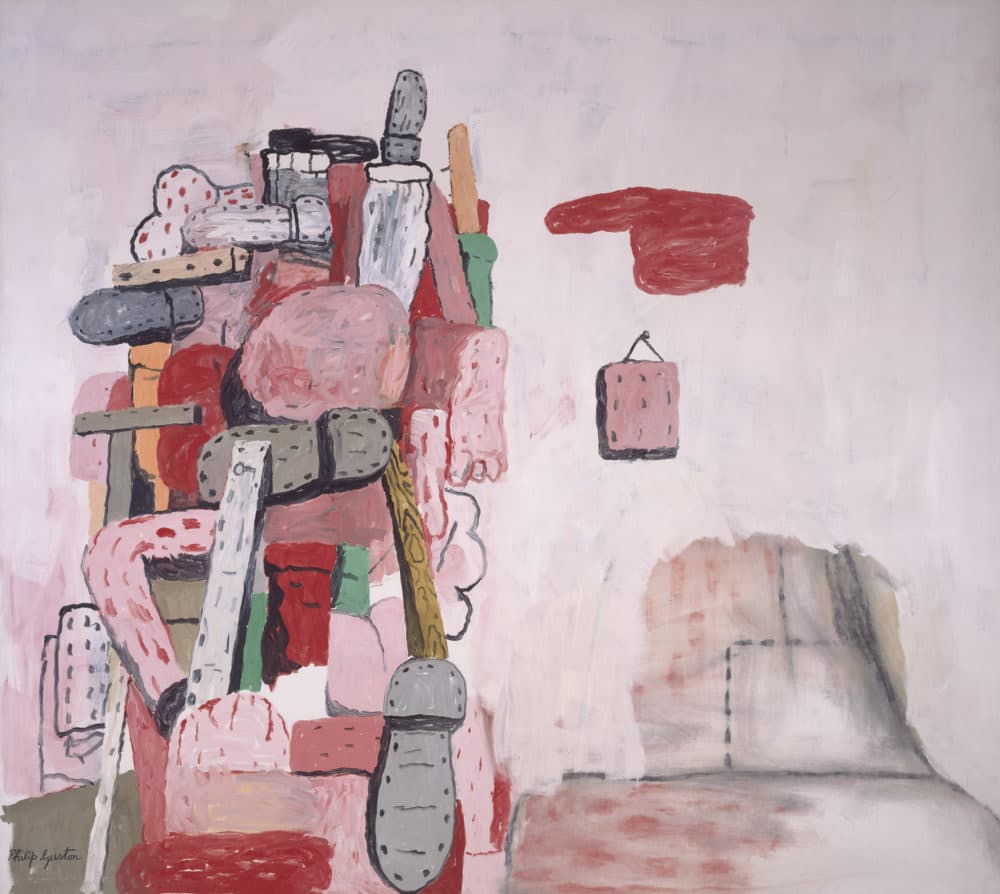
“Guston began making Klan figures in drawings and murals initially in the very early 1930s,” says MFA guest curator and art historian Kate Nesin. “At the time they were not directly illustrative… but he was making that work in response to growing up in Los Angeles, the youngest son of a Jewish immigrant family, at a time when Klan membership in Los Angeles especially was at its highest — in the 1920s and into the 1930s.”
In this retrospective of 73 paintings and 27 drawings from both public and private collections, the MFA has taken great pains to put Guston’s work in its broader context beyond the “Klan” motif. We see some of his paintings from the 1930s that have never been on public view, a 1938 conte crayon study for a cubism-inspired mural for the Queensbridge Housing Project, oils from his 1940s social realism period, as well as his abstract expressionist paintings of the 1950s that are reminiscent of works created by other New York abstract painters around that time. But no one was doing work like Guston’s paintings of the ‘60s and ‘70s, on view here in abundance. The artist created these pieces at an uneasy time in the United States, following the assassinations of Malcolm X and Martin Luther King and after horrific years in which snarling dogs and fire hoses were set upon peaceful civil rights protestors in the South. The Vietnam War, demonstrations against it, and even the violent clashes between police and protestors outside the Democratic National Convention in 1968, added to the tense tenor of the times. The exhibit, in fact, includes news reels from the period.
Guston translated this anxiety into a lexicon of enigmatic images that include cigarettes, enlarged eyeballs, hooded heads, and cropped, disembodied limbs. His paintings were not so much an indictment of evil as an exploration of it. He called his hooded paintings “self-portraits” according to MoMa Highlights, and said, “I perceive myself as being behind the hood…. The idea of evil fascinated me…. I almost tried to imagine that I was living with the Klan. What would it be like to be evil?”
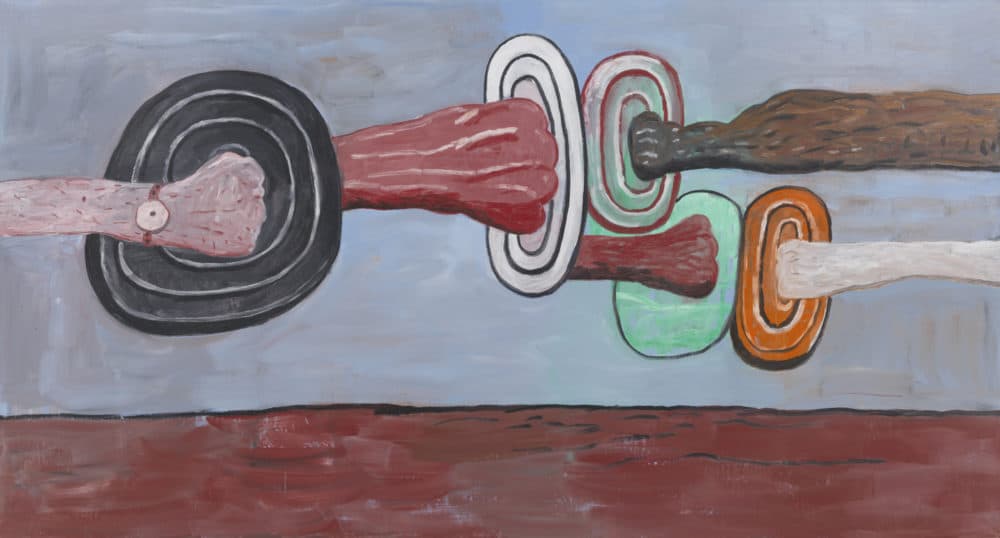
The disquieting aspects of his paintings may mirror not only the overall social turmoil of the period, but the trauma he suffered after his father died by suicide. His art, social and yet intensely personal, defied conventional categories and stands apart from art trends of the period like minimalism and pop art.
The themes that are interwoven throughout Guston’s work make him a complicated painter, not easily dissected and digested. Artists revere him for his restlessness and willingness to risk failure. Social historians appreciate his work as, “a conduit for hard conversations,” as Bernard puts it. The discomfort inherent in his art make it uniquely resonant to our current daily reality, also, it turns out, filled with racial strife, war and division.
“No matter when you had this exhibition, the ‘now’ is going to be different,” says Bernard. “The ‘now’ that happened before the postponement is different than the ‘now’ that we're in. At the current moment, I think about his paintings that have references to Odesa and the Black Sea. Pre-postponement, those wouldn't resonate as much as they do today. And… we don't know what's going to happen in the months that this show is up… The ‘now’ part of the exhibition title is so important because the ‘now’ when Guston created these works is different than the ‘now’ that we're in, that is going to be different than ‘now’ when the show closes, yet, we're having similar conversations.”
Turns out now may always be the right time for Philip Guston.
“Philip Guston Now” is on view at the Museum of Fine Arts, Boston from May 1-Sept. 11.
